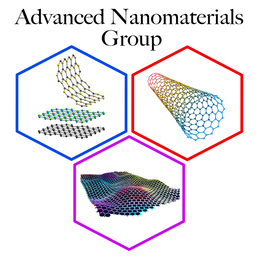|
Graphene is one of the strongest and stiffest known materials and is also very light weight. These properties mean that graphene can be mixed with plastics such as epoxy to make composites which have good specific physical properties (ie strength per unit mass).
Such graphene-plastic composites could be used to replace metals in the manufacture of aircraft and cars, making them lighter and more fuel efficient. Graphene is also electrically conductive which means it can be added to plastics to make them conductive as well. Conductive plastics are needed to protect carbon fibre aircraft wings against lightening strikes and prevent sparks from static electricity in the fuel lines and tanks of vehicles. Our lab, led by Dr. Mark A. Bissett, Prof. Ian A. Kinloch, and Dr. Cristina Valles, focuses on developing scalable processes to synthesize a variety of nanomaterials with well-defined atomic structures, assemble these nanomaterials into functional macroscale structures, and use these novel materials for sustainable energy and environmental applications. |
|
|
|



